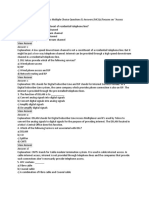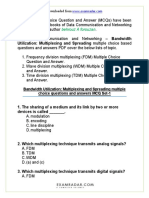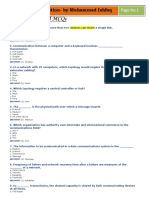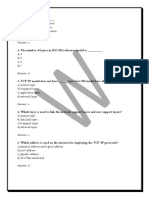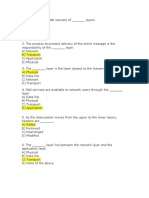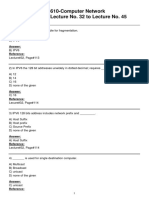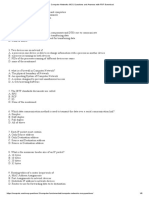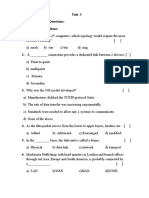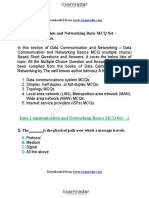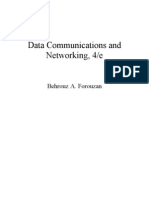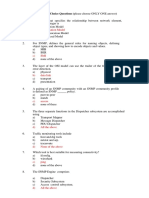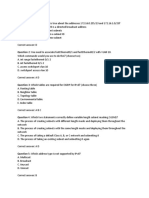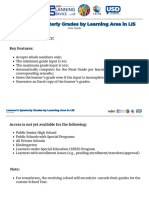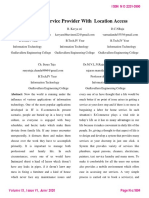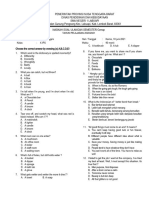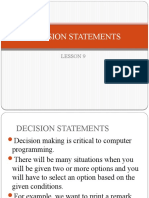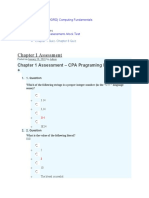0% found this document useful (0 votes)
277 views42 pagesMcqs of Chapter 1: C. Message
This document contains 50 multiple choice questions about networking concepts. The questions cover topics like network layers, data communication standards, network topologies, and networking components. Specifically, questions ask about the OSI model layers, data encoding methods, signal properties, physical and logical addressing, and different types of network connections (e.g. point-to-point vs. multipoint).
Uploaded by
Muhammad Waseem Anjum Muhammad Waseem AnjumCopyright
© © All Rights Reserved
We take content rights seriously. If you suspect this is your content, claim it here.
Available Formats
Download as PDF, TXT or read online on Scribd
0% found this document useful (0 votes)
277 views42 pagesMcqs of Chapter 1: C. Message
This document contains 50 multiple choice questions about networking concepts. The questions cover topics like network layers, data communication standards, network topologies, and networking components. Specifically, questions ask about the OSI model layers, data encoding methods, signal properties, physical and logical addressing, and different types of network connections (e.g. point-to-point vs. multipoint).
Uploaded by
Muhammad Waseem Anjum Muhammad Waseem AnjumCopyright
© © All Rights Reserved
We take content rights seriously. If you suspect this is your content, claim it here.
Available Formats
Download as PDF, TXT or read online on Scribd
/ 42








